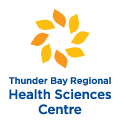Secondary Prevention
Secondary stroke prevention strives to reduce the risk of recurrent vascular events in individuals who have experienced a stroke or transient ischemic attack (TIA) by addressing risk factors most relevant to stroke, including: lifestyle, hypertension, dyslipidemia, previous stroke or TIA, atrial fibrillation, sleep apnea, and carotid stenosis.
Secondary stroke prevention can be addressed by hospitals, secondary stroke prevention clinics, family physicians/nurse practitioners, family health teams and other community-based care programs. Secondary prevention issues should be regularly addressed on an ongoing basis following a stroke or TIA.






